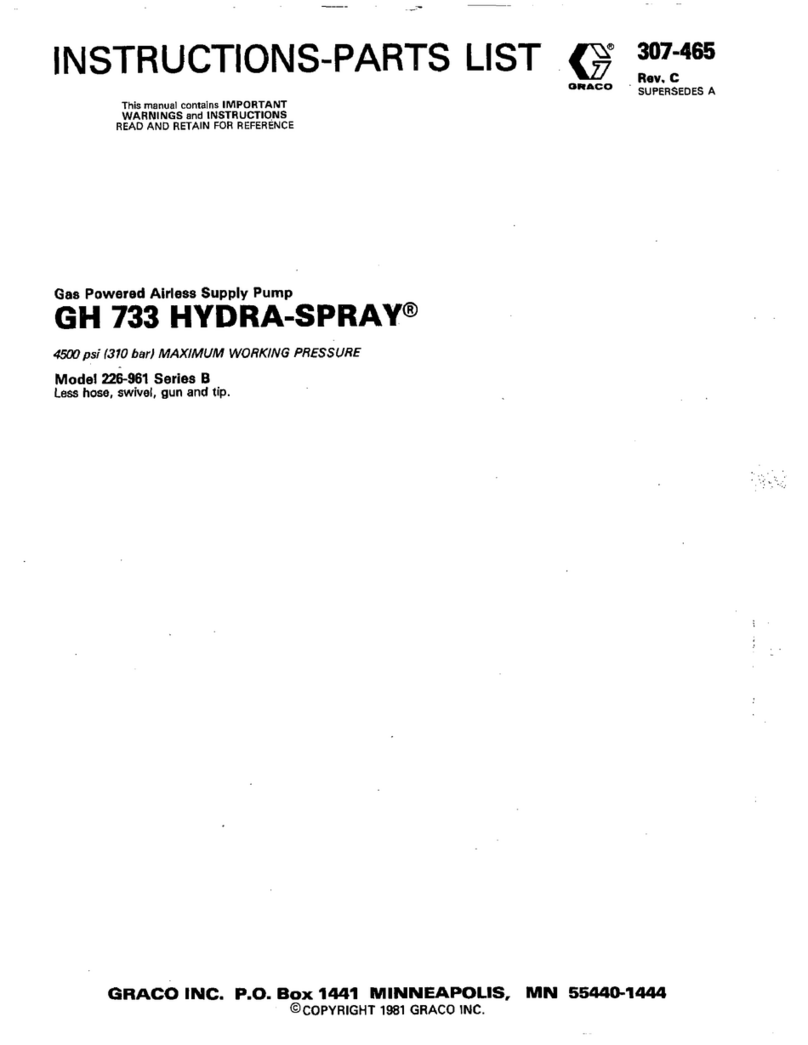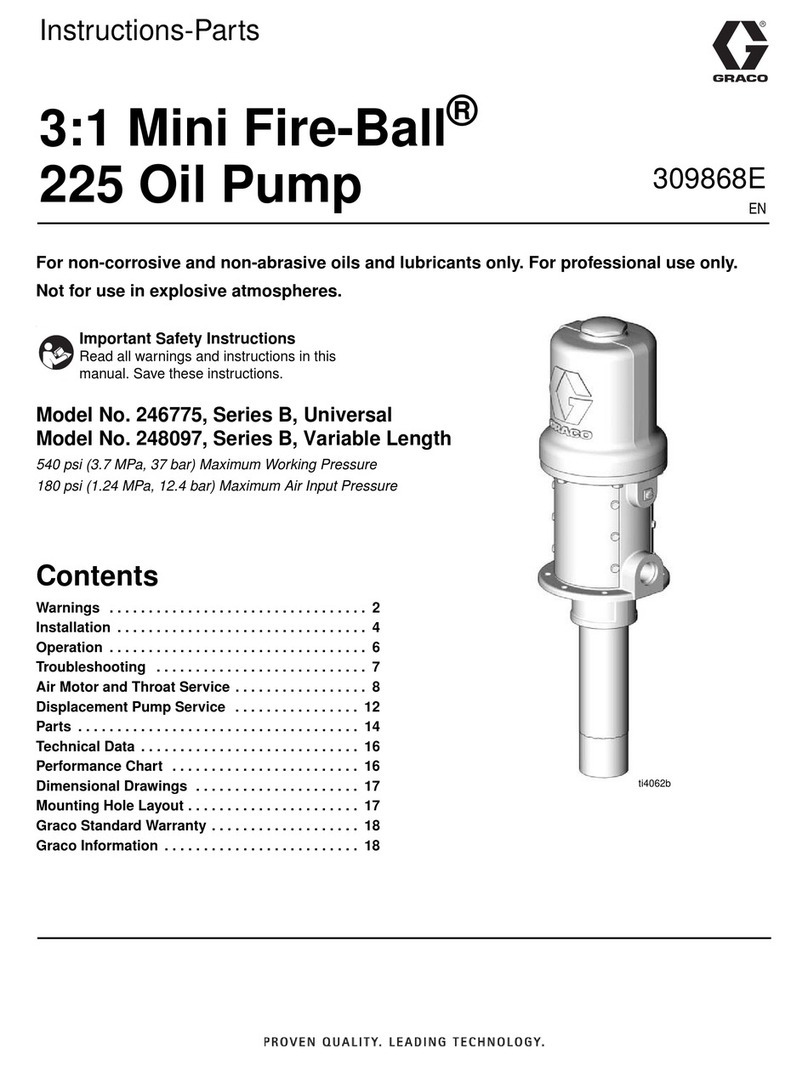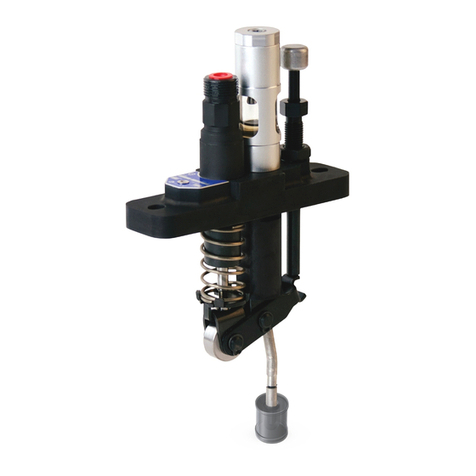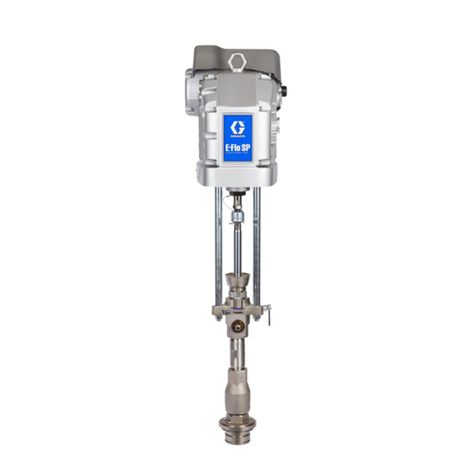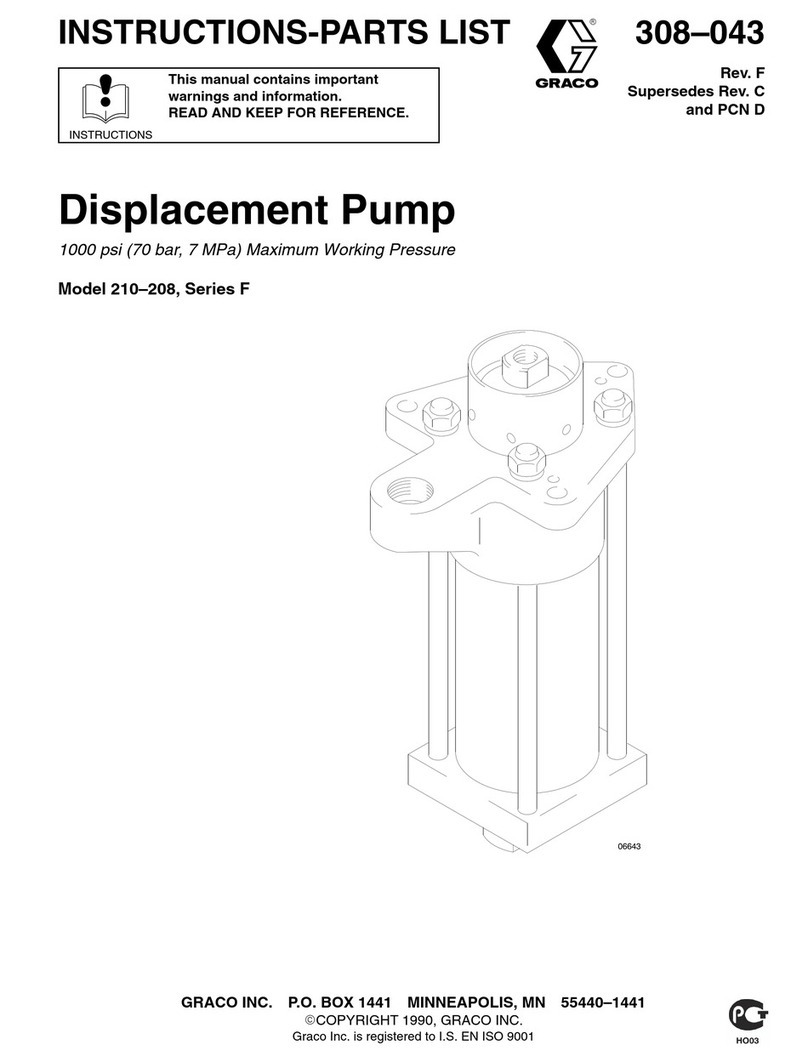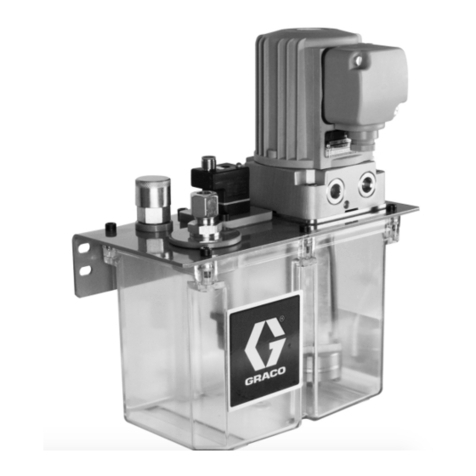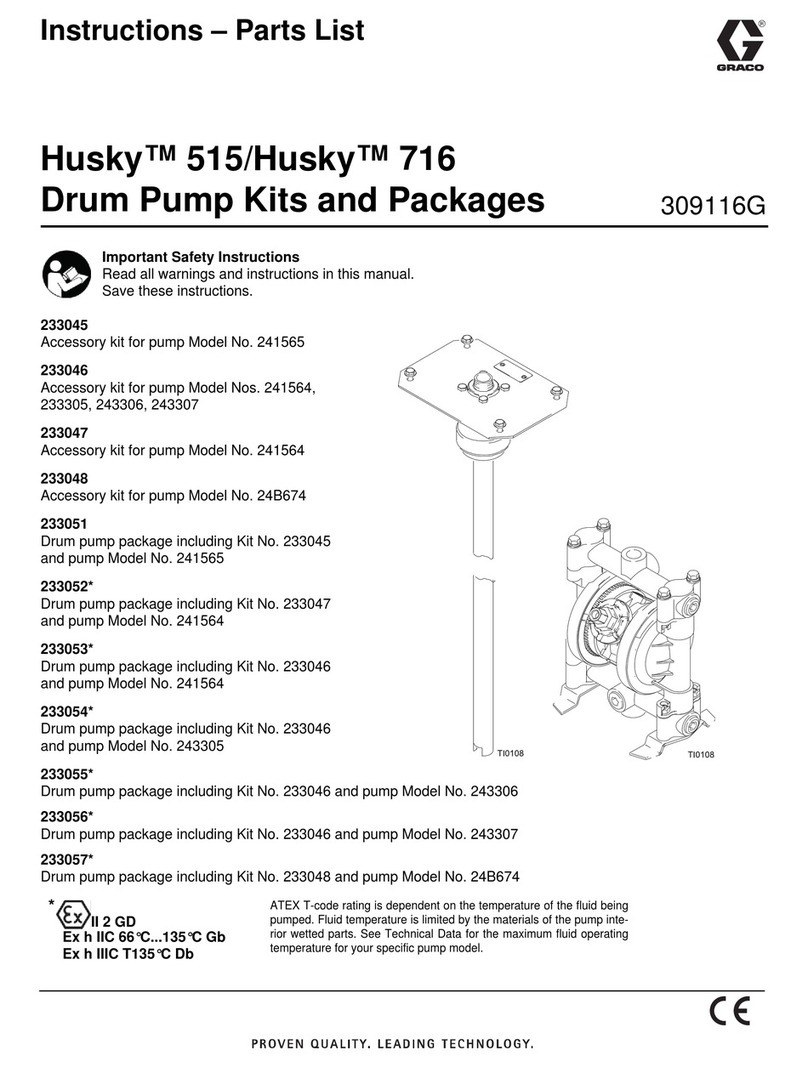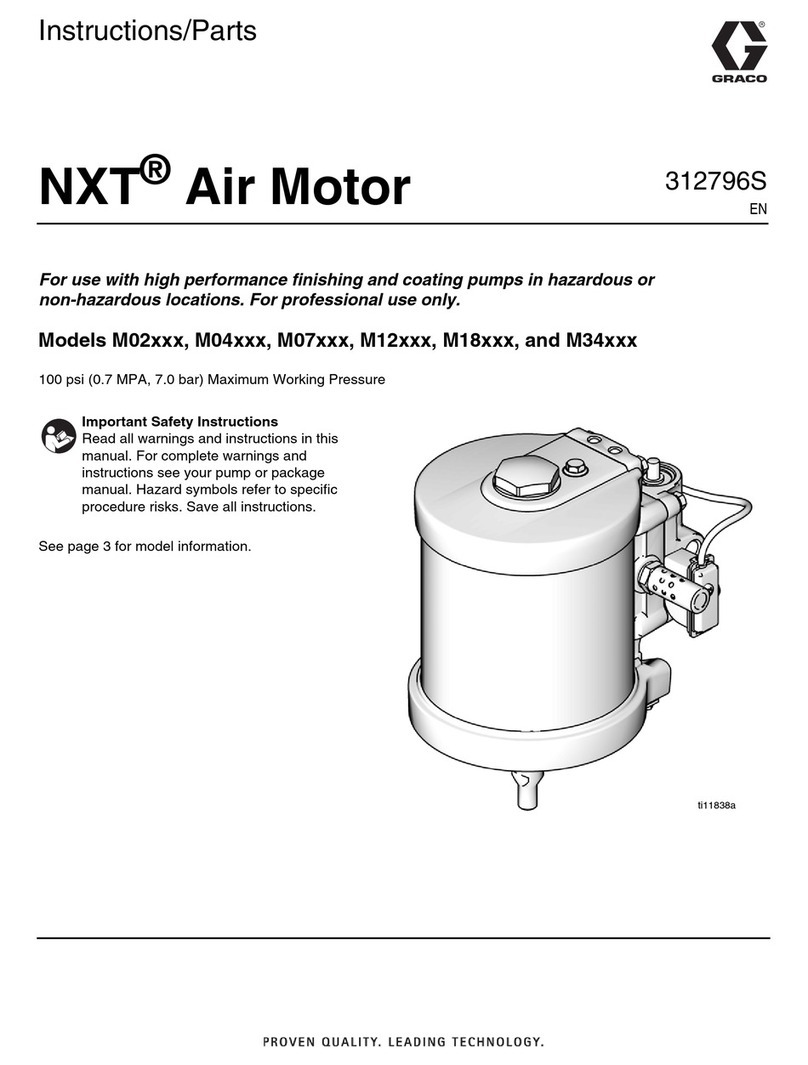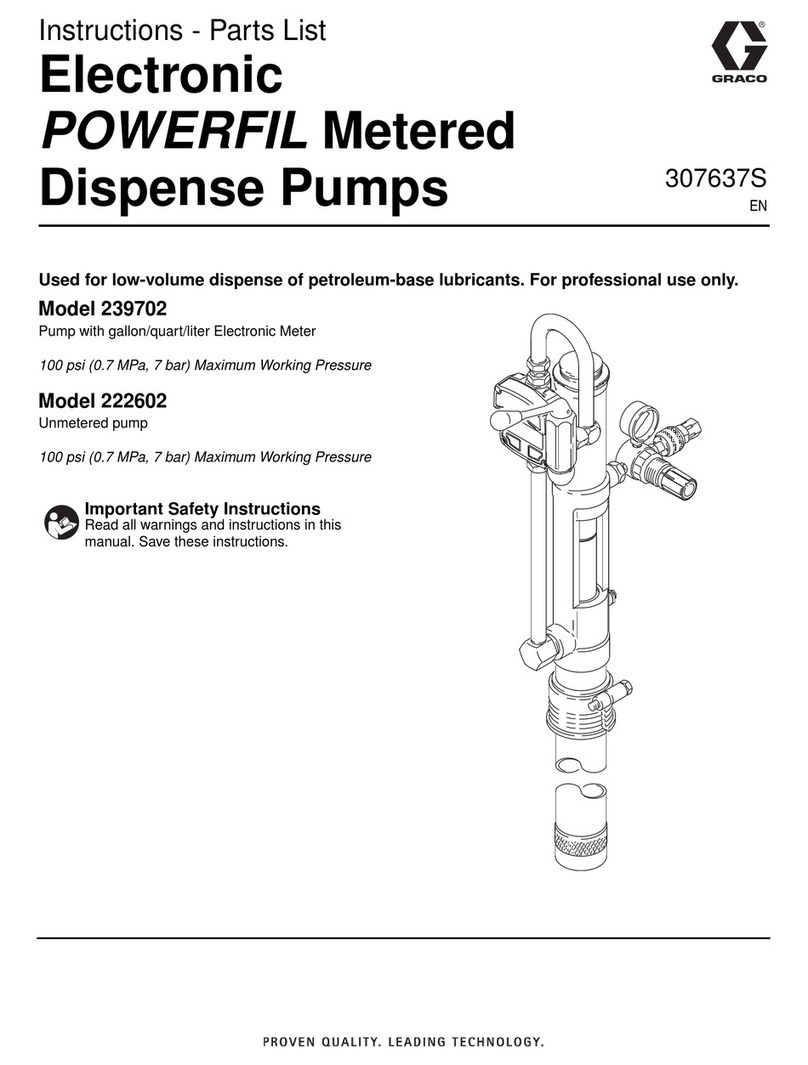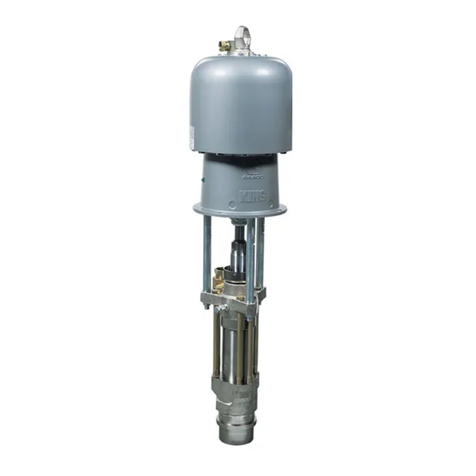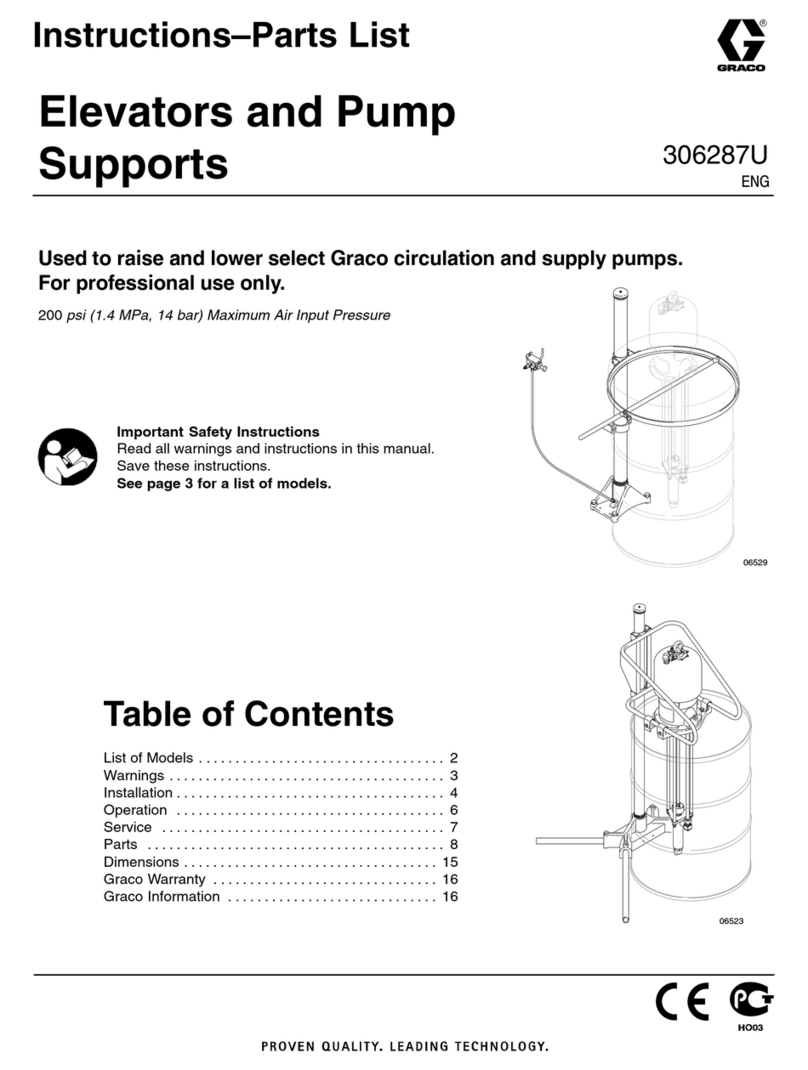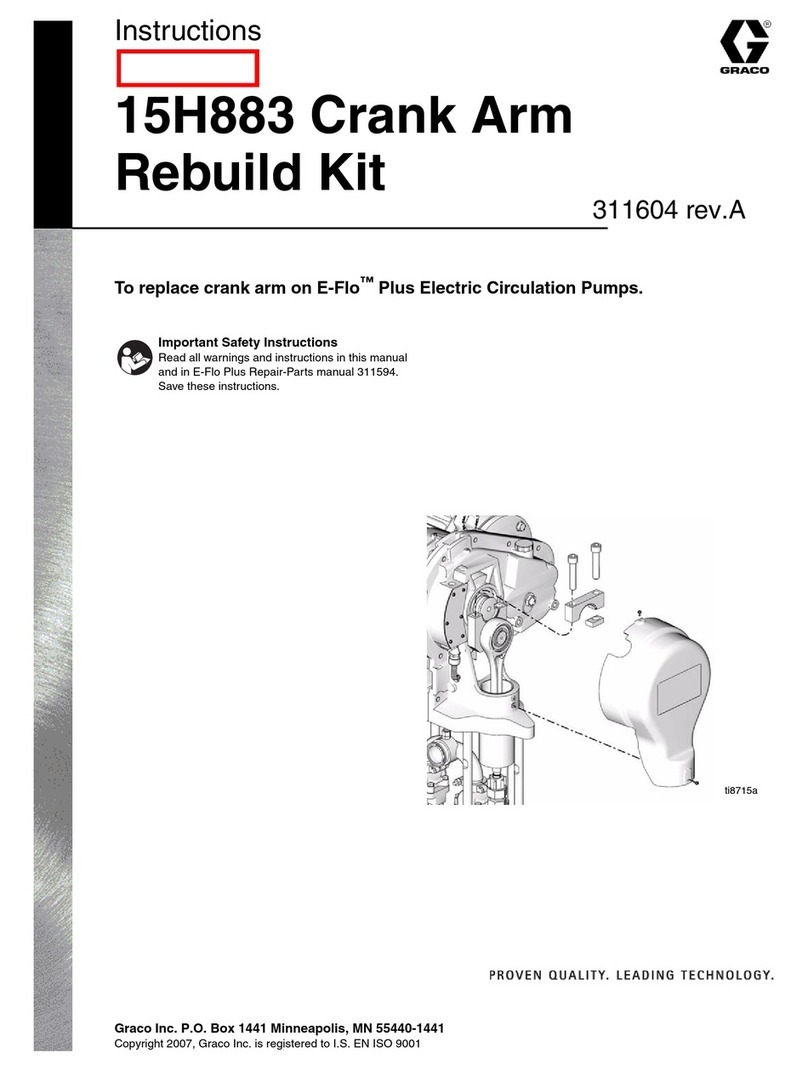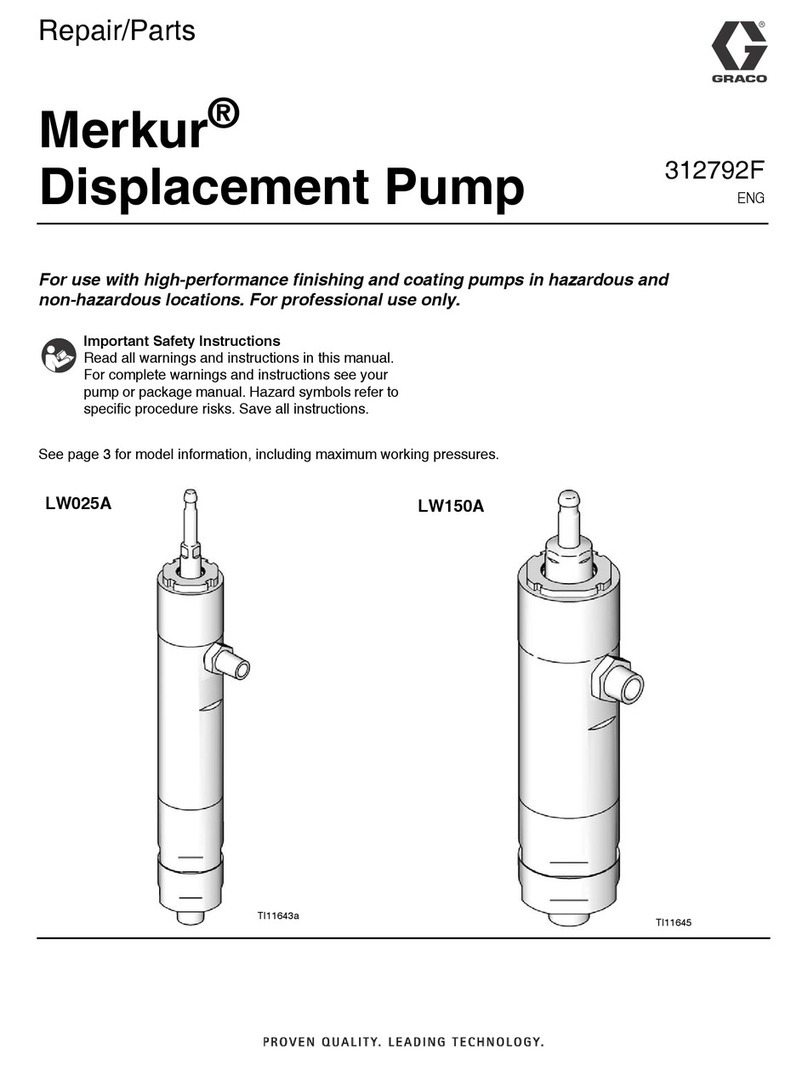
FIRE
OR
EXPLOSION
HAZARD
through the pump and hose. If every part of thespray equip-
Static electricity is created by the high velocity flow
of
fluid
rnent is not properly grounded, sparking may occur, and the
systemmay become hazardous. Sparking mayalso occur
when plugging in or unplugging
a
power supply cord.Sparks
can ignite fumes from solvents and the fluid being sprayed,
dust particles and other flammable substances. whether you
are spraying indoors or outdoors, and can cause
a
fire or ex-
plosionand seriousbodily injury and propertydamage. Do not
plug
in
or unplug any power supply cords in the spray area
when there is any chance of ignitingfumes still in the
air.
If you experienceany static sparking or evena slight shock
whileusingthis equipment,STOPSPRAYING IMMEDIATE-
thesystem again untiltheproblem hasbeen identified and
LY. Check the entire system forproper grounding. Do notuse
corrected.
Grounding
To reducethe risk of staticsparking, ground the pump andall
other spray equipment usedor located inthe spray area.
CHECK yourlocalelectrical code fordetailedgrounding in-
structions for your area and type of equipment. BE SURE to
ground
all
of
this
spray equipment:
1.
Pump:
use a ground wire and clamp as shown in Fig
1.
2.
Air hoses:use only grounded air hoses.
3.
Fluid
hoses:use only grounded fluid hoses.
4.
Air compressor: follow manufacturer'srecommendations.
5.
Spray
gun
or
dispensing velve: grounding is obtained
through connection to
a
properly grounded fluidhose and
pump.
6.
Fluid
supply container: accordingto local code.
7.
Object beingsprayed: according to your
lo&l
code.
8.
All solventpails used whenflushing,according to local
code. Use only metalpails, which are conductive, placed
on
a
grounded surface.
Do
notplace the pail on a non-
terrupts the grounding continuity.
conductive surface, such as paper or cardboard, which in-
9.
To
maintain grounding continuity when flushing or reliev-
ing
pressure, alwayshold a metalpart ofthegunlvalve
firmly to the side of a groundedmetalpail, then trigger the
gunlvalve.
Fig
1
Togroundthepump,lwsenthegroundingluglocknut~andwasher
the
slot
inlug
(2)
and tighten locknutsecurely.See Fig.
1.
Mnnecttb
(X).
lnselt one end
of
a
12
ga.
(1.5
mmz) minimum groundwire
M
into
otherendofthewiretoatruee~ground.Refertopage18ioordera
ground wire and clamp.
Flushing
Safety
Toreduce the risk of injection injury, static sparking, or
splashing follow the Pressure Relief Procedureon page
2,
and remove the spray
tip
(spray guns or spray valves only)
before flushing. Hold a metal part of the gunlvalve firmly
to
the side of a grounded metalpail and use the lowest possible
fluid pressure during flushing.
MOVING PARTS HAZARD
The piston
in
the air motor,locatedbehindthe air motor
plates, moveswhen air
is
suppliedtothe motor. Movingpa-
can pinchoramputateyourfingers or otherbodyparts.
Therefore, NEVER operate the pumpwith theair motor plates
removed. KEEPCLEAR of movingpartswhenstartingor
operating the pump. Before checking or servicing the pump,
follow the Pressure
Relief
Procedure onpage
2
to
prevent
the pump from starting accidentally.
HOSE
SAFETY
High pressure
fluid
in
the
hoses
can
be
verydangerous.
If
the HANDLEAND ROUTE
HOSES
CAREFULLY. Donotpullon
hose develops
a
leak, split or rupture due
to
any kind of wear,hoses to move equipment.
Do
not usefluids or solvents which
damageormisuse, the highpressuresprayemittedfrom
it
canare notcompatiblewith the inner tube andcover of the hose.
cause a fluid iniection iniurv or other serious bodilv iniurv or
property damage.
,.
I
,~
,
ALLFLUIDSPRAY HOSES MUSTHAVE SPRING
GUARDS
ON
BOTH ENDS1The spring guardshelp protect
the
hosa
fromkinks or bends at orcl&e toihecoupling which
can result in hose rupture.
TIGHTENa11 fluid connectionssecurely beforeeach use. High
pressure fluid can dislodge
a
loose coupling or allowhigh
pressure spray
to
be emitted from the coupling,
hose for cuts,leaks,abrasion, bulging cover, or damageor
NEVER useadamagedhose.Beforeeach use, check entire
exist, replace the hose immediately. DO NOT
try
to recouple
movement of the hose couplings.
If
any of these conditions
high pressure hoseor mend
it
withtape or any otherdevice. A
repaired hosecannot contain the
high
pressure
fluid.
Hose
Grounding
Continuity
Proper hosegrounding continuityis essentialto maintaininga
air and fluidhosesat least oncea week. If yourhose doesnot
groundedspray system. Checkthe electricalresistanceof your
havea tagon
it
which specifies themaximumelectrical
resistance, contact the hose supplier or manufacturerfor the
maximum resistance limits. Use a resistance meter in theap-
propriate range for your hose to check the resistance. If the
resistanceexceeds the recommended limits, replace
it
im-
mediately.An ungrounded or poorly groundedhosecanmake
yoursystem hazardous.Also,read
FIRE
OR
EXPLOSION
HAZARD, above.
IMPORTANT
ticulariy the General Standards, Part 1910, and the Construction Standards, Part 1926-should be consulted.
United States Government safetystandards have beenadopted under the Occupational Safetyand Health Act.Thesestandards-par.
306-726
3
